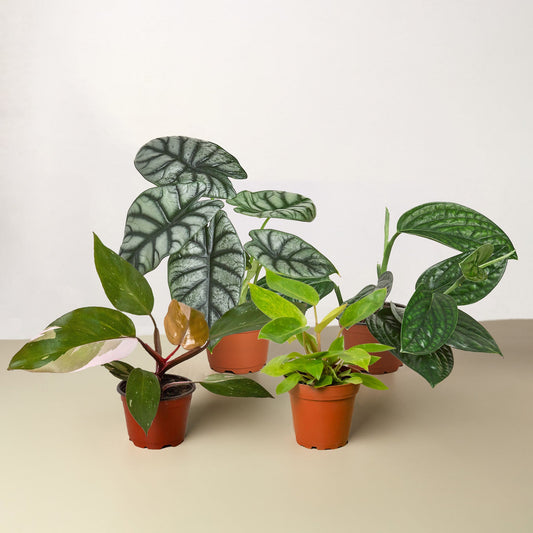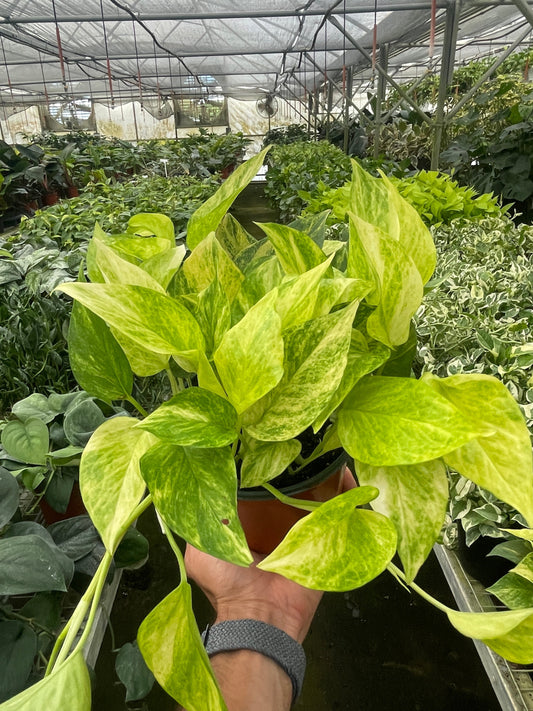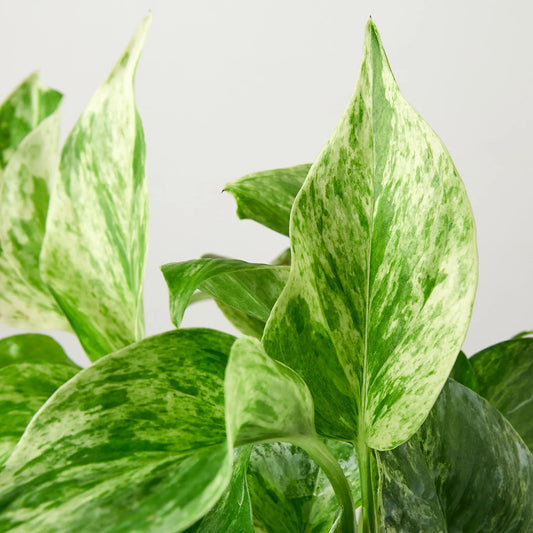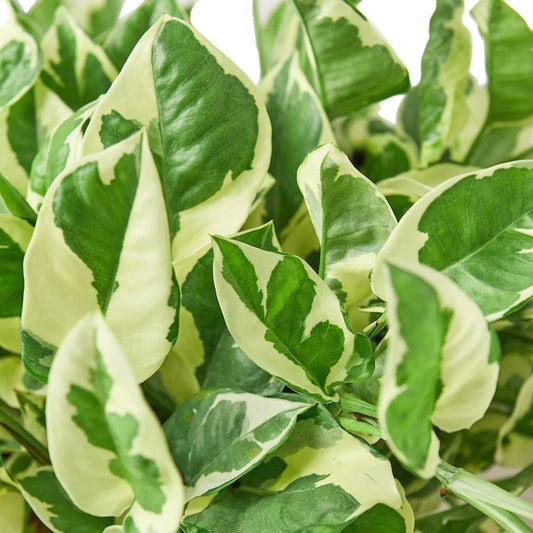How Much Light Does a Aloe Vera Need?
Cafe Planta Team
Imagine having a friendly, low-maintenance plant that's not only pretty to look at, but also has some awesome practical uses. That's right, we're talking about Aloe Vera. If you've ever wondered how much light an Aloe Vera needs, you're not alone. This is a common question among plant lovers, and it's a great place to start if you're looking to care for your Aloe Vera like a pro.
In this article, we’ll cover everything you need to know about providing the right lighting conditions for your Aloe Vera. From understanding its natural habitat to practical tips on positioning your plant at home, we've got you covered. So, let's dive in and help you keep your Aloe Vera thriving!
Understanding Aloe Vera's Natural Habitat
To figure out the best lighting conditions for Aloe Vera, it's helpful to consider where it comes from. Aloe Vera is native to regions with warm, dry climates, like the Arabian Peninsula and parts of Africa. In these areas, the plant is exposed to plenty of bright sunlight, often basking in it for most of the day. This natural environment gives us clues about what kind of light Aloe Vera prefers.
Think of Aloe Vera as a sun-loving plant. It thrives in sunny spots and is well-suited to handle a good amount of direct sunlight. However, like most things in life, balance is key. Too much sun can actually harm the plant, causing its leaves to turn brown or even get sunburned. On the flip side, insufficient light can make the plant grow leggy and weak, which we definitely want to avoid.
So, what does this mean for your Aloe Vera at home? Essentially, you want to mimic its natural habitat as closely as possible, providing plenty of bright, indirect light and just enough direct sunlight. This way, your Aloe Vera can grow strong and healthy, and you can enjoy its vibrant green leaves and potential health benefits.
Bright, Indirect Light Versus Direct Sunlight
Now that we've established Aloe Vera's love for sunlight, let's break down the difference between bright, indirect light and direct sunlight, and how each affects your plant.
Bright, Indirect Light: This is the kind of light that is intense but not directly hitting the plant. Imagine a sunny spot with sheer curtains filtering the sunlight. Aloe Vera loves this type of light because it provides the right intensity without the risk of scorching its leaves. If you place your Aloe Vera near a south or west-facing window with some protection, like a curtain, it’s likely to thrive.
Direct Sunlight: This is when sunlight falls directly on the plant without any obstruction. Aloe Vera can handle direct sun for a few hours each day, especially in the morning when the sunlight is less intense. However, prolonged exposure, especially in the afternoon, can lead to sunburn and stress the plant. Look out for signs like browning or crispy edges on its leaves, which indicate it's getting too much sun.
Finding the right balance between these two types of light is crucial. While Aloe Vera can tolerate some direct sunlight, especially if it's slowly acclimated to it, aim to keep it in bright, indirect light for the majority of the day. This will help keep your plant healthy and avoid any sun-related damage.
Signs That Your Aloe Vera Is Getting Too Much or Too Little Light
Just like us, plants have their ways of letting us know when something's off. Understanding these signs can help you adjust your Aloe Vera's lighting conditions to keep it happy.
Too Much Light:
- Leaf Discoloration: Leaves may turn brown, red, or yellow, indicating sunburn.
- Scorched Leaves: The edges of the leaves might become crispy or dry.
- Stunted Growth: If your Aloe Vera isn't growing, it may be stressed by too much light.
Too Little Light:
- Leggy Growth: Your Aloe Vera might stretch towards the light source, resulting in long, thin leaves.
- Pale Color: Leaves may lose their vibrant green color and appear washed out.
- Slow Growth: If your plant seems to be in slow motion, it might be asking for more light.
If you notice any of these signs, don't worry. Adjusting your plant's light exposure can help remedy these issues. Moving your plant to a different location or adding a sheer curtain to filter direct sunlight can make a big difference.
Best Locations for Aloe Vera in Your Home
Finding the perfect spot for your Aloe Vera is like finding the ideal seat in a café—not too much sun, not too much shade, just right. Here are some suggestions for placing your Aloe Vera in your home to ensure it gets the right amount of light:
South or West-Facing Windows:
- Pros: These windows receive the most sunlight during the day, making them ideal for providing bright, indirect light.
- Cons: Be cautious of intense afternoon sun. A sheer curtain can help filter the light and prevent sunburn.
East-Facing Windows:
- Pros: Morning sunlight is gentle and perfect for a few hours of direct exposure.
- Cons: Limited sunlight after the morning hours might require some supplementary lighting, especially in winter.
North-Facing Windows:
- Pros: These windows provide consistent, albeit low, light levels that can be suitable for Aloe Vera with additional artificial lighting.
- Cons: Natural light might not be strong enough on its own to keep the plant thriving.
To sum it up, aim to place your Aloe Vera near a south or west-facing window with some protection from intense afternoon sunlight. This setup will help replicate the plant's natural habitat and keep it happy.
Using Artificial Light for Aloe Vera
Sometimes, natural light just isn't an option, especially if you live in a place with limited sunlight or have rooms without windows. In such cases, artificial light can be a game-changer for your Aloe Vera.
When choosing artificial lighting, look for full-spectrum LED grow lights. These lights mimic natural sunlight and provide the right wavelengths for plant growth. Position the grow light about 6 to 12 inches above your Aloe Vera, and aim for around 12-14 hours of light per day.
Tips for Using Artificial Light:
- Adjust the Distance: Keep an eye on your plant and adjust the light distance if you notice signs of too much or too little light.
- Set a Timer: Use a timer to ensure your Aloe Vera gets consistent light each day.
- Mix with Natural Light: If possible, combine artificial and natural light to create a balanced environment.
Artificial lighting can be a great supplement or even a primary source of light for your Aloe Vera, especially during winter or in low-light homes. The key is to monitor your plant and make adjustments as needed.
Seasonal Adjustments for Aloe Vera Lighting
Just like us, plants experience changes with the seasons, and Aloe Vera is no exception. As the seasons change, so does the intensity and duration of sunlight, which means making some adjustments to your Aloe Vera's lighting conditions.
Summer: In summer, sunlight is more intense and lasts longer. If your Aloe Vera is already in a bright spot, you might need to provide some shade during the hottest parts of the day to prevent sunburn. A sheer curtain or a move to a slightly less sunny spot can help.
Winter: In winter, the days are shorter and the sun is weaker. You might notice your Aloe Vera isn't getting as much light as it needs. Consider moving it to a brighter spot, or supplementing with artificial light to maintain healthy growth.
Keep an eye on your plant throughout the year, and be ready to make small changes to its environment. This way, you'll ensure that your Aloe Vera continues to thrive, no matter the season.
Common Mistakes with Aloe Vera Lighting
Even the best plant parents can make mistakes, and that's okay! Here are some common lighting mistakes with Aloe Vera and how to fix them.
Too Much Direct Sunlight:
- Solution: Move your Aloe Vera to a spot with filtered light or provide some shading during the hottest parts of the day.
Insufficient Light:
- Solution: Relocate the plant to a brighter area, or use artificial lighting to supplement natural light.
Not Adjusting for Seasonal Changes:
- Solution: Be proactive about moving your plant or adjusting artificial lights as the seasons change to ensure it receives adequate light.
By being aware of these common pitfalls, you'll be better equipped to provide the right lighting conditions for your Aloe Vera, keeping it healthy and vibrant.
Creating a Thriving Aloe Vera Environment
Lighting is just one piece of the puzzle when it comes to caring for Aloe Vera. To create an environment where your plant can truly thrive, consider the following additional factors:
Temperature:
- Aloe Vera prefers temperatures between 55°F and 80°F (13°C and 27°C).
- Protect the plant from drafts and extreme temperature changes.
Watering:
- Let the soil dry out completely between waterings to prevent root rot.
- Water less frequently in winter, when the plant's growth slows down.
Soil:
- Use a well-draining soil mix, such as cactus or succulent soil.
- Consider adding perlite or sand to improve drainage.
By considering these factors alongside lighting, you'll create an environment where your Aloe Vera can grow strong and healthy, bringing beauty and benefits to your home.
Final Thoughts
Understanding the light needs of your Aloe Vera is key to ensuring its health and vitality. By providing the right balance of bright, indirect light and occasional direct sunlight, you can help your Aloe Vera thrive. Remember to watch for signs of too much or too little light and make seasonal adjustments as needed.
At Cafe Planta, we're passionate about helping you succeed on your plant journey. Whether you're looking for new houseplants, care accessories, or plant-themed apparel, we've got something for every plant lover. If you have any questions about your Aloe Vera or any other plant, feel free to email us or reach out on Instagram. We’re here to help you connect with nature and create a beautiful, thriving plant collection in your home.



















